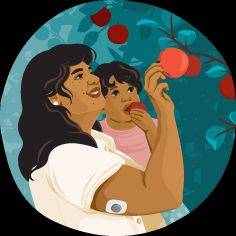Matcha is an increasingly popular coffee alternative among Gen Z. I tried replacing my coffee with matcha for a month, and here’s what I found.
Matcha is a concentrated form of green tea that involves grinding the leaves of the Camellia sinensis plant into a fine powder. The plants used for matcha are grown in the shade, which boosts its amino acid content.
Since the entire tea leaf is consumed rather than steeped, matcha has a higher concentration of caffeine and antioxidants than are typically present in green tea.
Due to its purported benefits, many members of Gen Z are swapping out their morning coffee for matcha. Some of matcha’s potential health benefits include:
- supporting cognitive function
- preventing certain diseases, such as cancer
supporting weight loss
As a 22-year-old with a caffeine dependency, I replaced coffee with matcha for a month. Below, I’ll describe my experience with making the switch.
I thought it would be important to share my circumstances before I dive into my review.
I usually have a double shot of espresso in my morning iced coffee. This comes out to about
When I made my matcha, I used 2 tsp of matcha powder and 4 oz of hot water. Since I didn’t have a wooden whisk, (and also because I am lazy), I blended the two together using the milk frothing attachment on my espresso machine.
There is around 70 mg of caffeine per tsp of matcha powder. This brings the total amount of caffeine I was consuming to 140 mg—a 110 mg deficit compared to my coffee.
How to prepare matcha
- Measure out the desired amount of matcha powder and add it to a bowl. A standard serving of matcha is 1 tsp of matcha powder.
- Prepare the hot water. There should be twice the amount of water as matcha powder, so this is 2 oz if preparing a standard serving. The temperature should be about 158°F (70°C).
- Pour the water into the bowl.
- Whisk the powder and the water together until it becomes smooth with froth on top. The traditional way to do this is with a special bamboo whisk, called a chasen. However, if you do not have a chasen, you can use a whisk or a handheld electric frother.
- Pour over hot milk to enjoy a warm drink, or pour over ice and cold milk to make it a cold drink.
I used a bulk bag of matcha from Costco. Matcha can get very expensive, and I was not willing to fork over hundreds of dollars for a month’s supply.
This brand wasn’t ceremonial grade, but it was $20.00 for a giant bag. I was cutting it with milk to make a latte anyway, so I personally wouldn’t have noticed the difference.
If the quality is important to you, or if you prefer to drink matcha without milk or sweeteners, there are many options when it comes to quality and pricing.
Add sweeteners
Many people find that matcha can have a grassy flavor. I found that I could improve the taste by adding sweeteners, such as:
- maple syrup (this was my favorite)
- liquid stevia
- vanilla extract
- honey
These are just a few of the sweeteners I tried. Experiment with different flavored syrups and sweeteners to find what you like best.
I added this to the matcha powder and hot water before frothing in step 3.
The first day I made the switch was brutal. I was dead tired. But, interestingly, I didn’t experience the withdrawal headache, which I usually experience if I don’t drink any coffee.
I believe that the matcha didn’t have enough caffeine to make me feel awake, but it did have enough to prevent the headache.
The issue of feeling awake was hard to handle when it came to work. After having coffee, I experience a burst of energy and motivation which allows me to dive into my tasks first thing in the morning.
On the other hand, matcha felt like more of a steady release. I didn’t experience that initial burst after drinking it. But I also didn’t experience the caffeine crash from coffee. Over time, I started to feel like I was at an average level of energy throughout the day.
Interestingly, when I started drinking coffee again after my month of matcha, I got a headache.
No.
I love my morning coffee. I enjoy feeling the huge burst of energy, and I don’t mind if I get sluggish later on.
I have a hard time getting up in the morning, and having my coffee makes me feel like I’ve started my day. I felt that my performance at work suffered when I did not get to drink my coffee.
I also enjoy the taste of coffee more than matcha.
Am I dependent on coffee? Absolutely. Do I care? Not particularly. Matcha is nice every once in a while, but it can’t replace my coffee.
Matcha recipes to try
Matcha is higher in caffeine than green tea and can serve as a refreshing morning drink. Potential health benefits can include supporting cognitive function and weight loss.
There are different levels in the quality of matcha available at different price points. Some ways to improve the taste of matcha include adding sweeteners and milk.
However, as a coffee enthusiast, I personally did not find it to be a suitable replacement for coffee.




